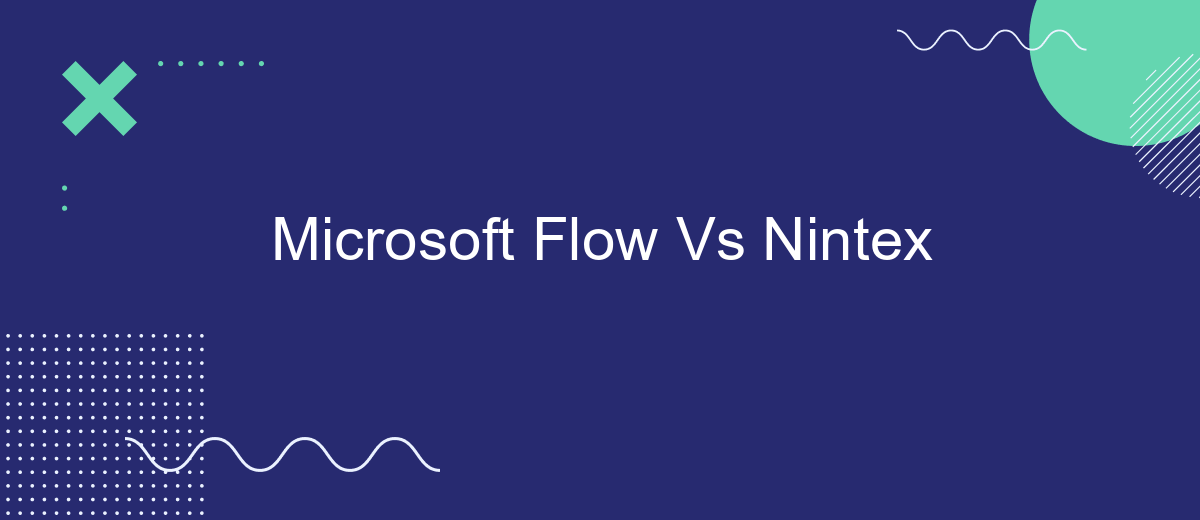In the evolving landscape of business process automation, Microsoft Flow and Nintex stand out as two powerful tools for streamlining workflows and enhancing productivity. This article delves into a comparative analysis of these platforms, examining their features, ease of use, integration capabilities, and pricing structures to help organizations determine which solution best meets their specific needs.
Overview
Microsoft Flow and Nintex are both powerful tools designed to automate workflows and improve productivity. Microsoft Flow, now known as Power Automate, is a cloud-based service that allows users to create automated workflows between various applications and services. Nintex, on the other hand, offers a comprehensive suite of workflow automation tools that integrate seamlessly with platforms like SharePoint and Office 365.
- Microsoft Flow (Power Automate): Ideal for integrating with Microsoft services and applications.
- Nintex: Known for its robust workflow capabilities and ease of use with SharePoint.
- SaveMyLeads: A useful service to consider for automating lead management and integrating with various CRM systems.
Both Microsoft Flow and Nintex offer unique advantages, making them suitable for different business needs. Microsoft Flow excels in its integration with the Microsoft ecosystem, while Nintex provides a more extensive range of workflow automation features. SaveMyLeads can complement these tools by streamlining lead management processes, ensuring that businesses can efficiently handle their customer data and interactions.
Features and Capabilities

Microsoft Flow, now known as Power Automate, and Nintex are both powerful automation tools designed to streamline business processes. Power Automate offers a user-friendly interface and robust integration capabilities with a wide range of Microsoft services such as Office 365, Dynamics 365, and Azure. It allows users to create automated workflows between various apps and services, facilitating tasks like data collection, notifications, and approvals. Additionally, Power Automate includes AI Builder, which enables users to add AI capabilities to their workflows without any coding experience.
Nintex, on the other hand, is known for its advanced workflow automation and document generation features. It provides a comprehensive set of tools for process management, including Nintex Workflow, Nintex Forms, and Nintex RPA. Nintex excels in providing customizable solutions for complex business processes and offers seamless integration with various third-party services. For example, SaveMyLeads can be used to enhance Nintex's integration capabilities by automating the transfer of leads and customer data between different platforms, ensuring that businesses can maintain efficient and accurate data flow across their systems.
Pricing and Licensing

When comparing Microsoft Flow and Nintex in terms of pricing and licensing, it's important to consider the different pricing models and features they offer. Microsoft Flow, now known as Power Automate, provides a subscription-based pricing model that is often more affordable for small to medium-sized businesses. On the other hand, Nintex offers a more complex pricing structure that can be tailored to the specific needs of an organization, which might be more suitable for larger enterprises with extensive workflow requirements.
- Microsoft Flow: Starts at per user/month for the basic plan, with premium plans available for more advanced features.
- Nintex: Pricing is based on the number of workflows and users, with custom quotes provided based on specific organizational needs.
Both platforms offer free trials, allowing organizations to evaluate their features before making a commitment. Additionally, tools like SaveMyLeads can be used to streamline the integration process, ensuring that workflows are set up efficiently and effectively. This can be particularly beneficial for businesses looking to optimize their automation processes without incurring significant costs.
Benefits and Drawbacks

Microsoft Flow, now known as Power Automate, and Nintex are both popular tools for automating workflows and processes. Each has its own set of advantages and disadvantages that cater to different business needs. Power Automate is deeply integrated with Microsoft 365, making it a natural choice for businesses already using Microsoft's suite of products.
Nintex, on the other hand, offers a more robust set of features for complex workflows and forms. It is particularly strong in document generation and process mapping, which can be beneficial for larger enterprises with intricate requirements. However, it may require more extensive training to fully utilize its capabilities.
- Power Automate is user-friendly and integrates well with Microsoft 365.
- Nintex provides advanced features for complex workflows and document management.
- Power Automate offers better pricing options for small to medium-sized businesses.
- Nintex may require more training and is generally more expensive.
Both platforms offer valuable features, but the choice depends on your specific needs and existing software ecosystem. For those looking to integrate various services seamlessly, tools like SaveMyLeads can further enhance the capabilities of these workflow automation platforms, making the integration process even smoother.
Conclusion
In conclusion, both Microsoft Flow and Nintex offer robust solutions for automating workflows and improving productivity within organizations. Microsoft Flow, now known as Power Automate, provides a seamless integration with the Microsoft ecosystem, making it an excellent choice for businesses heavily invested in Microsoft products. Its user-friendly interface and extensive library of connectors allow users to automate tasks with minimal technical expertise.
On the other hand, Nintex stands out with its advanced workflow capabilities and flexibility, catering to more complex business processes. It also offers a wide range of integrations, including third-party services like SaveMyLeads, which can further enhance its functionality by simplifying the integration of various applications. Ultimately, the choice between Microsoft Flow and Nintex depends on the specific needs and existing infrastructure of your organization. Both tools have their unique strengths and can significantly streamline business operations when implemented effectively.


FAQ
What are the main differences between Microsoft Flow and Nintex?
Which platform is more user-friendly for non-technical users?
Can both platforms integrate with third-party applications?
How do these platforms handle complex workflows?
Are there alternatives for automating workflows and integrations?
Are you using Facebook Lead Ads? Then you will surely appreciate our service. The SaveMyLeads online connector is a simple and affordable tool that anyone can use to set up integrations for Facebook. Please note that you do not need to code or learn special technologies. Just register on our website and create the necessary integration through the web interface. Connect your advertising account with various services and applications. Integrations are configured in just 5-10 minutes, and in the long run they will save you an impressive amount of time.
